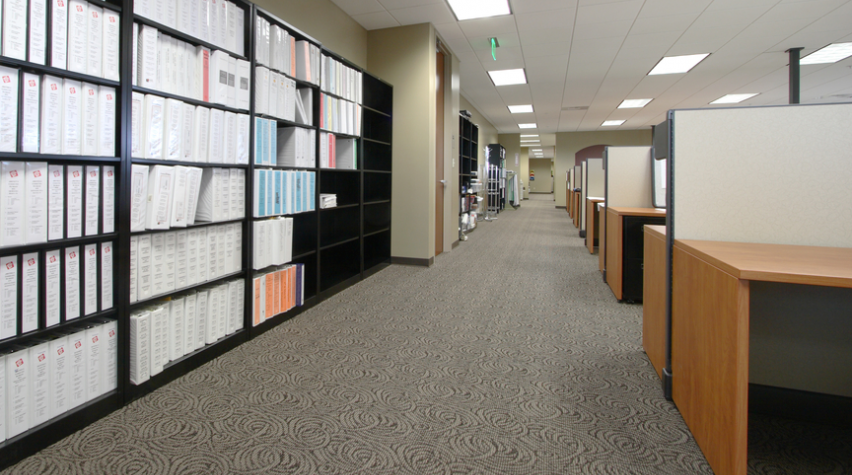
Matching workstyle to workspace
An important consideration in these decisions, however, is to look at how today's office employee actually works. I spoke with Brian Lee, a young chemical engineer from Newark, DE. He said that his company has cubicles for all of its engineers, as well as long cafeteria-style tables for engineers and technicians to share on the manufacturing floor. At Lee's location, engineers can often be found in their assigned cubicles -- but they are just as likely to gravitate to the common space with their laptops, where the open design inspires them to work with one another. Lee said that collaboration was a strong part of his company's culture, and he also noted that it was perfectly acceptable for one engineer to tell another that he or she was busy and did not want to be disturbed.

At AIChE, we have a diverse staff of engineers, project managers, writers, designers, conference planners, and more. Staff members receive a lot of calls from our member volunteers, vendors, and other collaborators. It can be difficult to work the phones without disturbing one's neighbor, who may be trying to concentrate on designing the new website or editing an article for CEP.
At the same time, we work with our colleagues within the office. I find myself walking through the office each day to handle issues with people in other departments. And, perhaps most importantly, our work can be highly creative. Creative work requires a great deal of concentration, and even the shortest interruptions can inhibit productivity.
Taking the office home
Have you noticed people at your offices coming in early or staying much later than is expected of them? I personally prefer to work when there are fewer people in the office, simply because it allows me to focus on a project better. Some employees (particularly those who are younger and have more flexible lives at home) regularly work until 8 pm, or take their computers home to take advantage of the silence. Isn't that one of the benefits of the Internet revolution? In 2012, most of our work can be done from a laptop, anywhere, whether it is 11 am and the office is buzzing, or 11 pm and we are in the comfort of our own homes. Of course, much email is received -- and conference calls usually need to be conducted -- during traditional business hours. And, collaboration is much easier when people have open doors (or no doors). Still, it is much harder to get complicated projects done without a quiet, personal space. Moving to a new office is going to be a great improvement for AIChE. Additional conference rooms will improve teamwork. Telephone headsets and expanded use of laptops instead of desktop computers will contribute to a more flexible and productive workplace. Cubicles provide a compromise between being able to communicate freely and being able to work without distracting one's neighbors. But sometimes you need to lose yourself in an idea to properly solve a problem. At that time, there is no substitute for a quiet, no-distractions environment, and flexibility in working locations and hours is the best way to guarantee that.



Comments
Very well written post Arjun! My colleagues and I were just talking about this particular topic the other day at lunch. While I like how the open concept encourages collaboration, I do agree with you that it is often hard to concentrate when you can literally listen to everyone's phone conversation! I think the AIChE new office design is trying to strike the balance. I do agree having more huddle room and conference rooms are beneficial. There are times when I need quiet time, I would actually book myself a huddle room and bring my laptop there to work. I also find that I get more writing/proposal written at home or at non-peak hours when no one is around! Wouldn't it be nice if everyone is given an ipad and we can work anywhere we like (especially on a beautiful 65 deg F dry day in the fall?!)
In my office, we all have cubicles with low walls opening up to a conference table in the middle - this allows us to quickly move from our desks to the conference table to discuss ideas or issues. We have 6 people in this configuration. My last job had the same set up (but without any walls) and it was for 4 people. I think it works really well! We spend a lot of time out on the plant floor as well, so there usually aren't too many overlapping phone conversations.